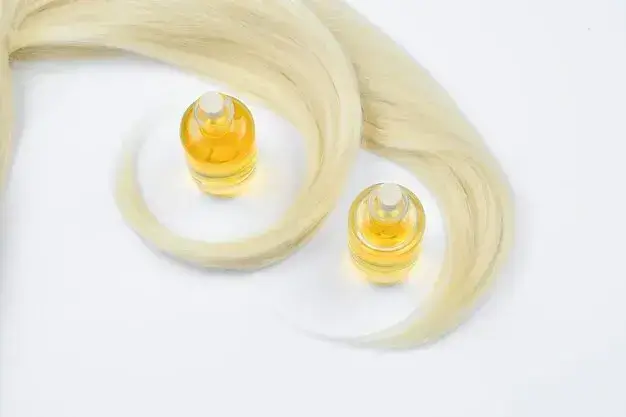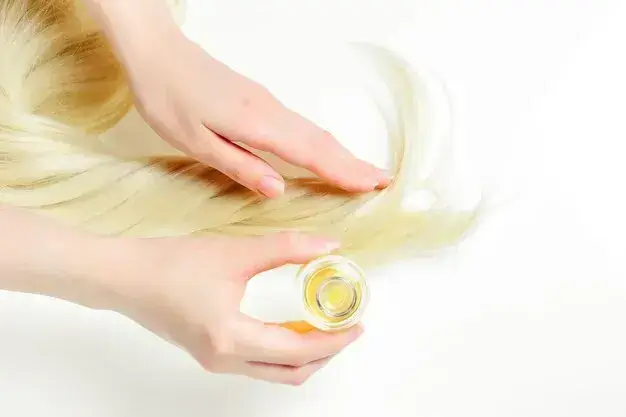Learn more about silk proteins for hair, including what they are and what they are not, the role of their main ingredients sericin and fibroin, and their strengthening and protective effects on hair. Learn how silk proteins can help repair damaged cuticles and maintain healthy shine and elasticity.

Definition and Characteristics of Silk Protein for Hair
Silk protein for hair is primarily used to repair, strengthen, and protect damaged hair.This natural protein, extracted from insects, plays a vital role in improving hair health and luster. It is composed of two primary components—sericin and fibroin—each serving essential functions in maintaining hair structure and moisture. By doing so, silk protein makes hair smoother, prevents moisture loss, and enhances hair elasticity.
What is Silk Protein?
Silk protein is a natural ingredient extracted from silkworm cocoons, known for its delicate and smooth texture. It consists of a combination of amino acids that offer excellent moisturizing and protective benefits for both skin and hair. When applied to hair, it smooths the surface and repairs damaged cuticles, restoring a healthy shine. Due to these qualities, silk protein is widely used as a key ingredient in hair care products.
Strengthening and Protective Effects of Silk Protein
Silk protein helps reinforce weak hair areas, deeply nourishing it and making it stronger. Moreover, it protects hair from heat and UV damage, promoting scalp and hair health.

Key Ingredients and Functions of Silk Protein for Hair
The primary components of silk protein for hair are sericin and fibroin. While sericin mainly retains moisture and provides a hydrating effect, fibroin maintains hair elasticity and strength by forming a protective layer to minimize hair damage.
Roles of Sericin and Fibroin
Sericin forms a protective layer on the hair surface, safeguarding it from external stimuli and retaining moisture for a hydrated appearance. In contrast, fibroin provides deep nourishment, keeping hair soft and resilient.
How Silk Protein Penetrates Deep into Hair
Silk protein fills in damaged areas of the hair and forms a protective layer to reinforce the cuticles. This ingredient is especially effective on hair weakened by heat, UV rays, and chemical treatments. Its lightweight molecular structure allows it to penetrate deep into the hair, providing essential nutrients to the inner layers and enhancing the elasticity and strength of the hair. Additionally, silk protein attracts moisture, preventing dryness and reducing hair breakage or split ends.

Effective Ways to Use Silk Protein for Hair
Silk protein can be applied to hair through various products such as shampoos, treatments, hair essences, and serums. Each product type varies in concentration and usage depending on the hair condition and needs.
How to Use Silk Protein Shampoos and Treatments
Shampoos and treatments containing silk protein are particularly effective for repairing damaged hair. When using, gently massage the shampoo into the scalp and lather it well to apply evenly to the hair. Apply the treatment to wet hair after shampooing, leave it on for 5–10 minutes, and then rinse thoroughly. During this process, using the Super Seed Balm Revitalize Shampoocan provide deep nourishment to the hair and cleanse the scalp without irritation, thanks to its natural surfactants and high concentration of vitamins.
How to Use Hair Essences or Serums with Silk Protein
Silk protein can also be used in hair essences and serums to smooth the surface of damaged hair and form a protective layer, shielding it from heat styling damage. For example, TERS Tellus Nine Seed Oil Hair Essenceworks with nine concentrated oil ingredients alongside silk protein to regenerate damaged hair cells and increase resistance to external stressors. When applying the serum, use a small amount and spread it evenly from the ends to the midsection of the hair. Using heat styling tools afterward can further enhance the shine and health of the hair.

Important Points to Consider When Choosing Silk Protein Products for Hair
It’s crucial to check the content and concentration of silk protein when selecting a product. The higher the concentration, the more effective it is, and products should be chosen according to the extent of hair damage and hair type.
How to Check Silk Protein Content
Look for silk protein listed at the top of the ingredients list and ensure that the concentration is clearly indicated in the product description. This helps in assessing the actual silk protein content.
Product Selection Guide Based on Hair Condition
For severely damaged hair or hair weakened by frequent coloring and heat styling, use products with a high concentration of silk protein. For relatively healthy hair, choose lighter silk protein products.

Future Trends and Prospects of Silk Protein for Hair
The use of silk protein is evolving toward eco-friendly and sustainable methods, gaining more attention among consumers. In the future, more hair care products are expected to contain silk protein through more efficient extraction and synthesis.
Development of Eco-Friendly Silk Protein
To produce silk protein in an environmentally friendly manner, artificial silk protein is being developed as a future alternative to animal-based ingredients. Additionally, new fermentation technologies are being researched to improve production efficiency and reduce environmental impact.
Sustainability and Efficiency Enhancement Research for Silk Protein
Various synthetic studies are being conducted to enhance the sustainability of silk protein, and new ingredient combinations are being developed to improve its efficacy compared to existing silk protein. This research aims to establish silk protein as a crucial component in the future hair care industry.
